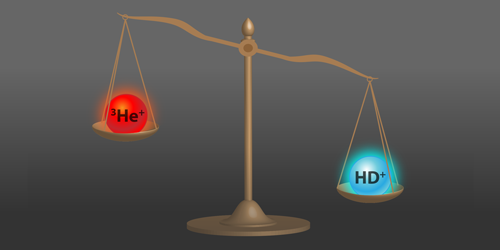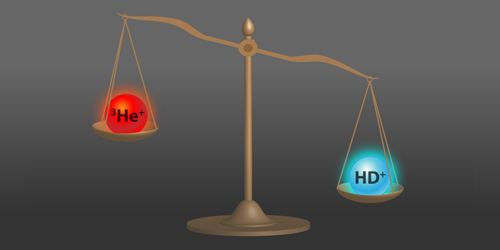Nuclear Masses Don’t Add Up
In 2015 Edmund Myers at Florida State University in Tallahassee and colleagues reported measurements of atomic mass ratios that left researchers puzzled. Their data implied that the sum of the masses of the proton and deuteron minus the mass of the helium-3 nucleus, that is, , was much smaller—by more than 4 standard deviations—than the value deduced by combining accepted values of the individual masses. Something didn’t add up. Either the Myers team’s measurements or the individual mass values were off. A subsequent measurement of the proton mass was made by other researchers, implying that the accepted proton mass had indeed been too large (see 18 July 2017 Synopsis). However, the discrepancy remained at more than 3 standard deviations. Now, in a rerun of their experiment, Myers and co-workers confirm their 2015 result with improved precision.
For their experiments, the team used a Penning trap mass spectrometer. This setup can precisely measure the ratio of the cyclotron frequencies of two trapped ions, from which the ions’ mass ratio is inferred. Myers and colleagues significantly improved their 2015 apparatus, reducing both the inhomogeneity of the trap’s magnetic field and the noise in the apparatus detection circuit. They then redid their measurement of the ratio of the masses of and the molecular ion , which can be converted to . Because of the reduced uncertainty, their result again differs by more than 4 standard deviations from the value calculated using the updated smaller proton mass and the masses of the deuteron and of the helium-3 nucleus. The finding may have implications for the proposed revision of the International System of Units (SI) in terms of fundamental constants.
This research is published in Physical Review A.
–Ana Lopes
Ana Lopes is a Senior Editor of Physics.





